Known internationally for his fantastical glass blown sculptural installations, American artist Dale Chihuly’s work and I have crossed paths multiple times this year. First, at the Botanical Gardens in Phoenix, Arizona, where from a distance I mistook his blue spiked glass sculptures for alien-like mega-cacti. Then there he was again—this time in the form of a yellow frazzled glass “sun” sitting at the front entrance of the Musée des beaux-arts de Montreal. I’ll be the first to admit that I passed Chihuly off as a designer of appealing sculptural décor, rather than a significantly important artist of our time. Thus, I was slightly surprised when the Royal Ontario Museum announced CHIHULY as their summer 2016 blockbuster exhibition. Had I been too quick to judge? Was there more to Chihuly than colourful glass bent into perplexing shapes. Curiously, I went to see for myself.
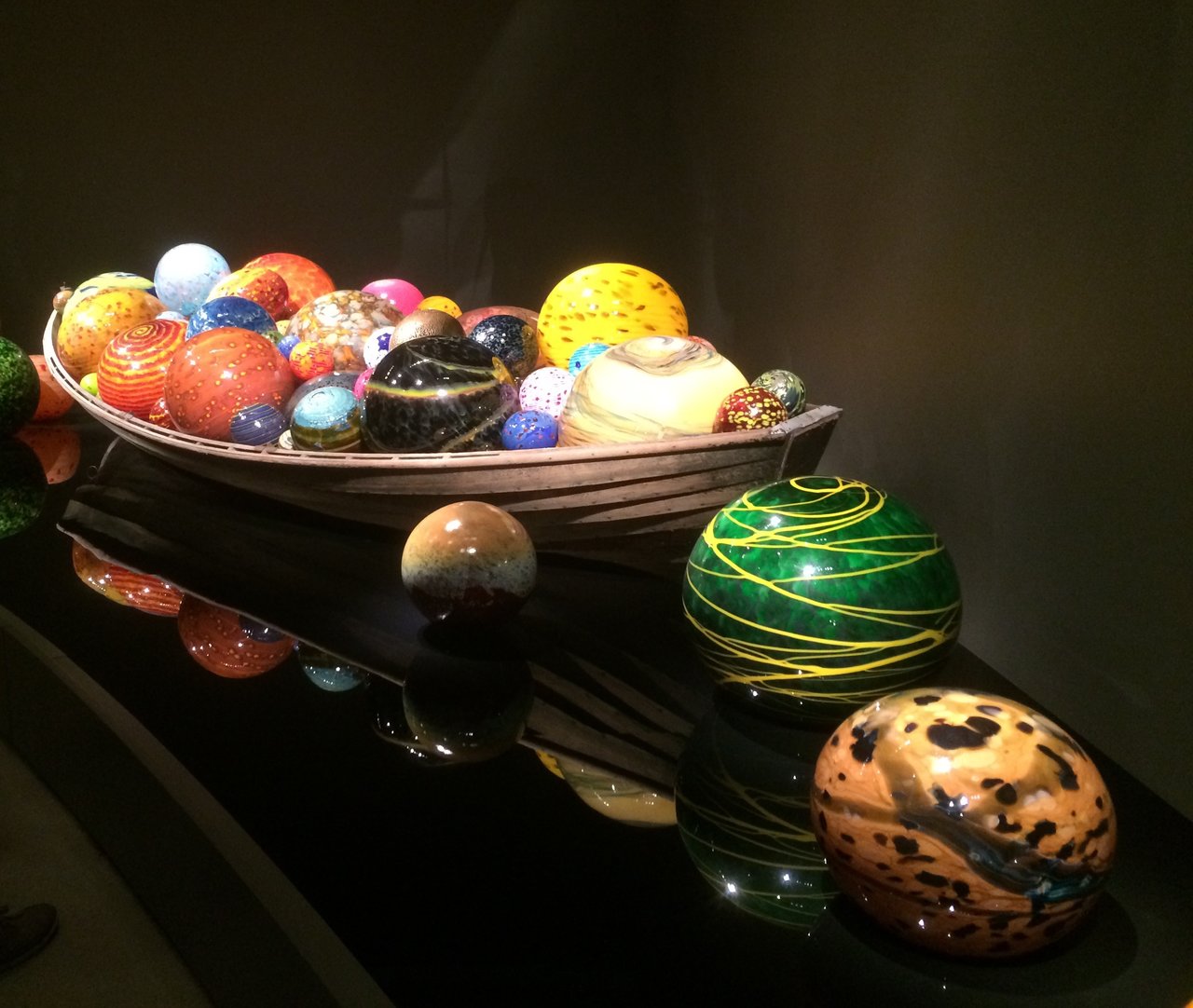 Dale Chihuly, Float Boat, 2014, blown glass and wooden boat
Dale Chihuly, Float Boat, 2014, blown glass and wooden boat
Going into the show, I knew that Chihuly was an artist who capitalized on the “wow factor”—everything is larger than life, brighter than life, and leaves the viewer questioning how on earth a material as fragile as glass could be molded into so many different forms. In room one, “Float Boat” and “Blue and Purple Boat” stun with beach ball-sized marbles that resemble psychedelic planets. In room two, the surrealist garden installation “Laguna Torcello” features human-scale spiral plant formations extending for meters upon meters across the exhibition space. The museum walls are painted charcoal grey, elevating Chihuly’s vibrant hues of purple, red, yellow, and blue to reach their full aesthetic potential. As you walk further into the show, spiked and spiraled glass overtakes the space to the point that you realize there are no longer any discernable forms left, only Chihuly-isms. Quite suddenly you realize—you have entered into the Chihuly vortex.
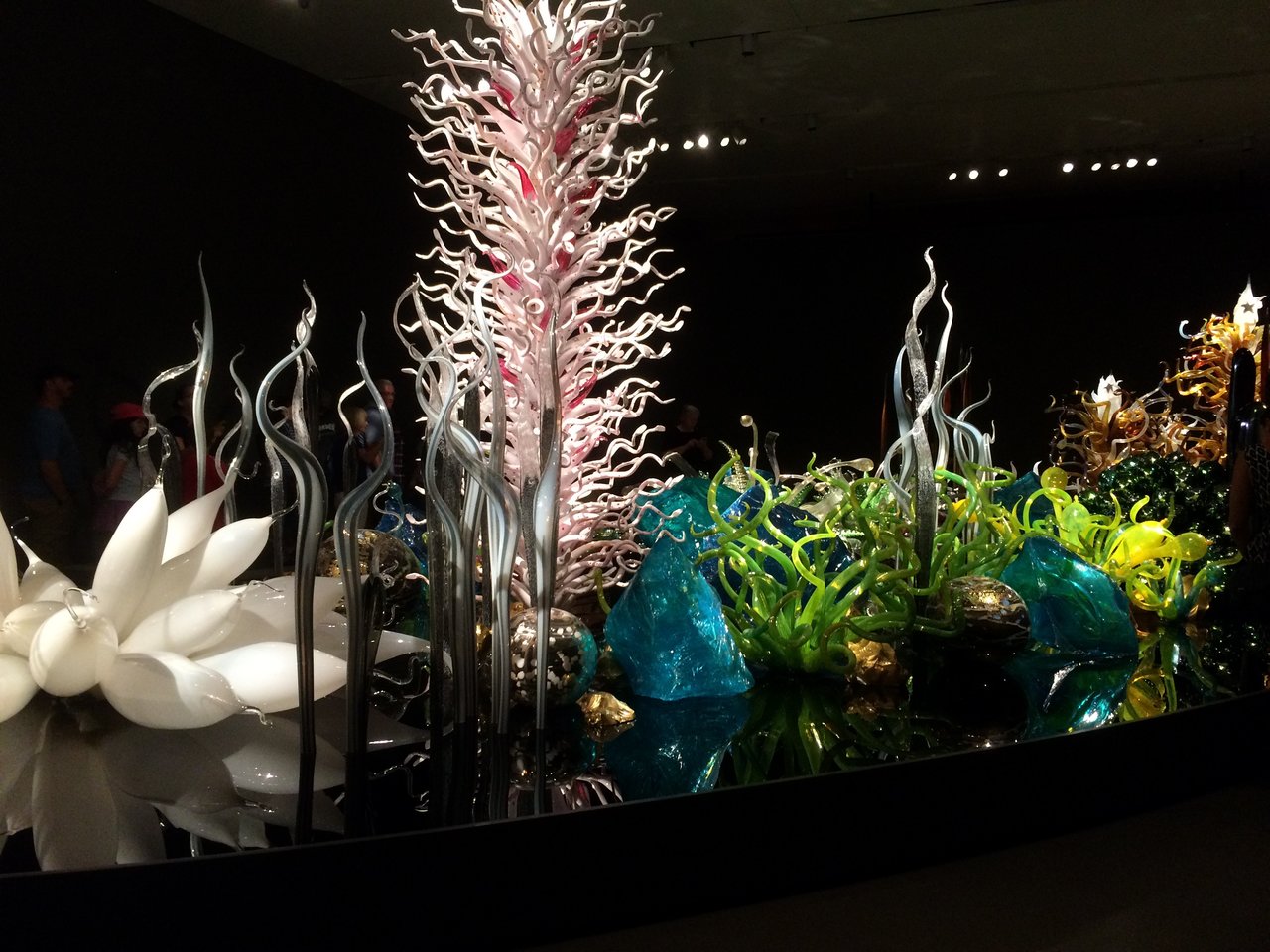 Dale Chihuly, Laguna Torcello, 2012, blown glass and steel
Dale Chihuly, Laguna Torcello, 2012, blown glass and steel
For me, the Chihuly vortex was a lot of things: impressive, vibrant, tapping into the viewer’s tactile sensibilities (I really did want to touch everything), and full of many, many artworks. But as full as the show was (with both visitors and art) it was also quite empty—devoid of the conceptual aspect of contemporary art that we as viewers so often seek out. As noted by the didactic panels, everything was as it appeared on the surface, and the core meaning of most of the work was simply that Chihuly—being the craftsman that he is—just wanted to make.
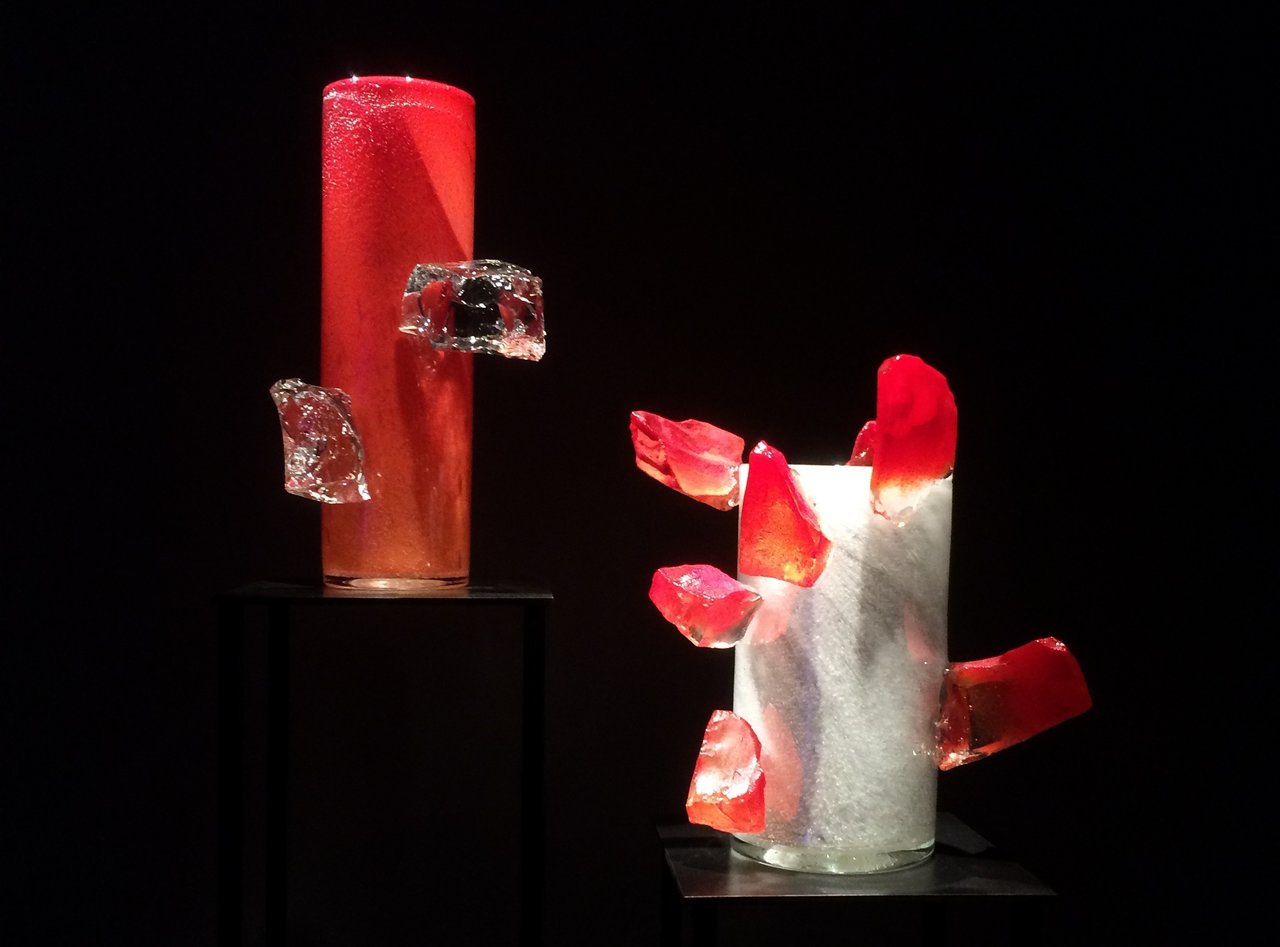 Dale Chihuly, Jerusalem Cylinders, 1999-2012, blown glass
Dale Chihuly, Jerusalem Cylinders, 1999-2012, blown glass
For example, in his series “Jerusalem Cylinders,” Chihuly fulfilled his desire to create cylindrical shaped glass with crystals sticking out of them, because he simply “[loved] the look of glass crystals.” Another example includes the body of work “Icicle Chandeliers and Towers,” which demonstrates the artist’s fascination with light and glass: “shoot the light through them, then that’s going to be something to look at,” a quote on the wall elaborates. Sure, Chihuly’s glass sculptures do look quite nice in all of their extravagantly whimsical eye-catching glory, but is there more to them than just surface aesthetics?
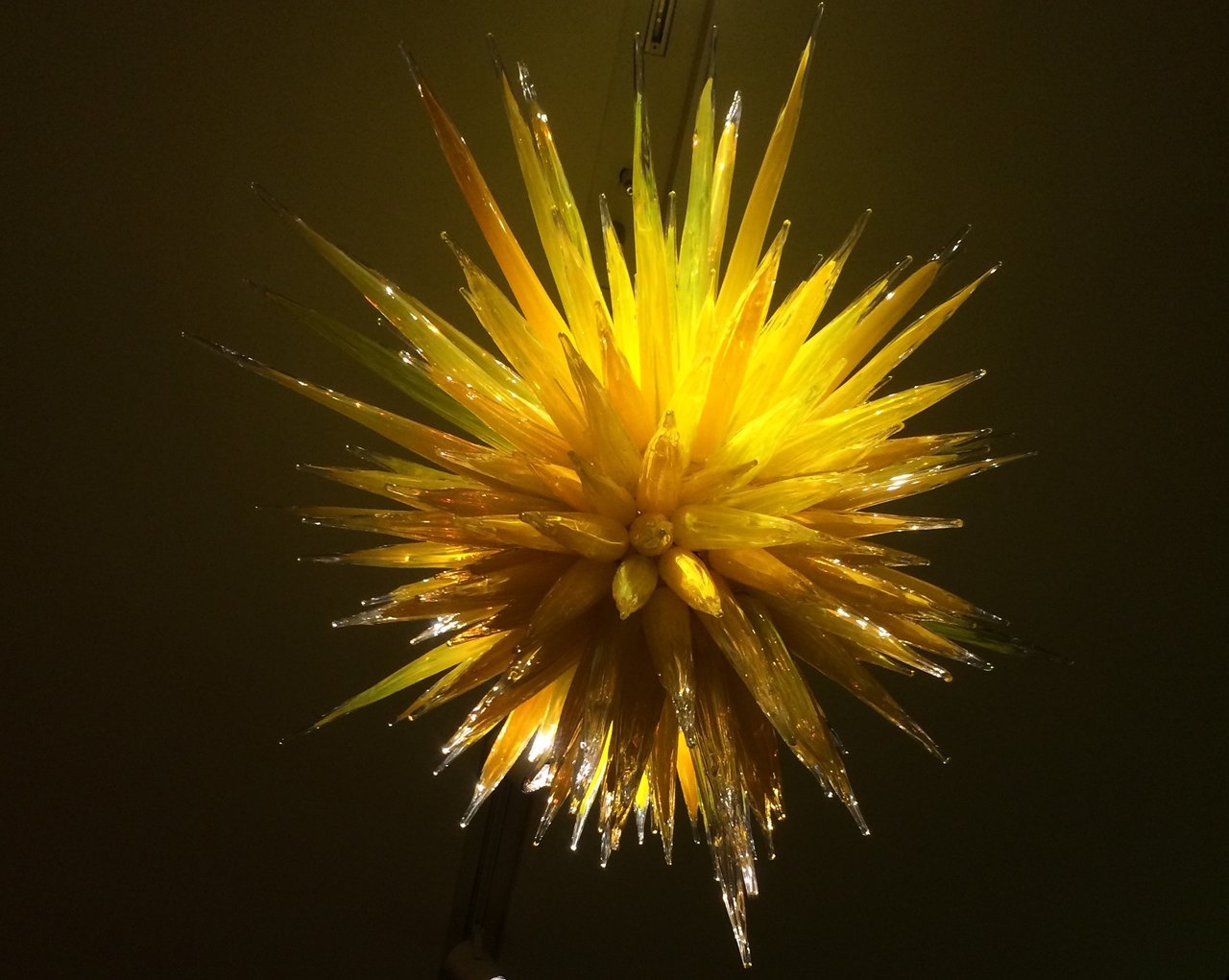 Dale Chihuly, Icicle Chandelier (detail), 2015, blown glass and steel
Dale Chihuly, Icicle Chandelier (detail), 2015, blown glass and steel
Evidently, not really. Aside from the few artworks inspired by the artist’s own life (like the pieces in “Northwest Room,” inspired by the Native American communities from Chihuly’s hometown on the Pacific Northwest coast), finding concept in Chihuly’s glassworks is a journey that yields little result because for him, craft and beauty trumps concept.
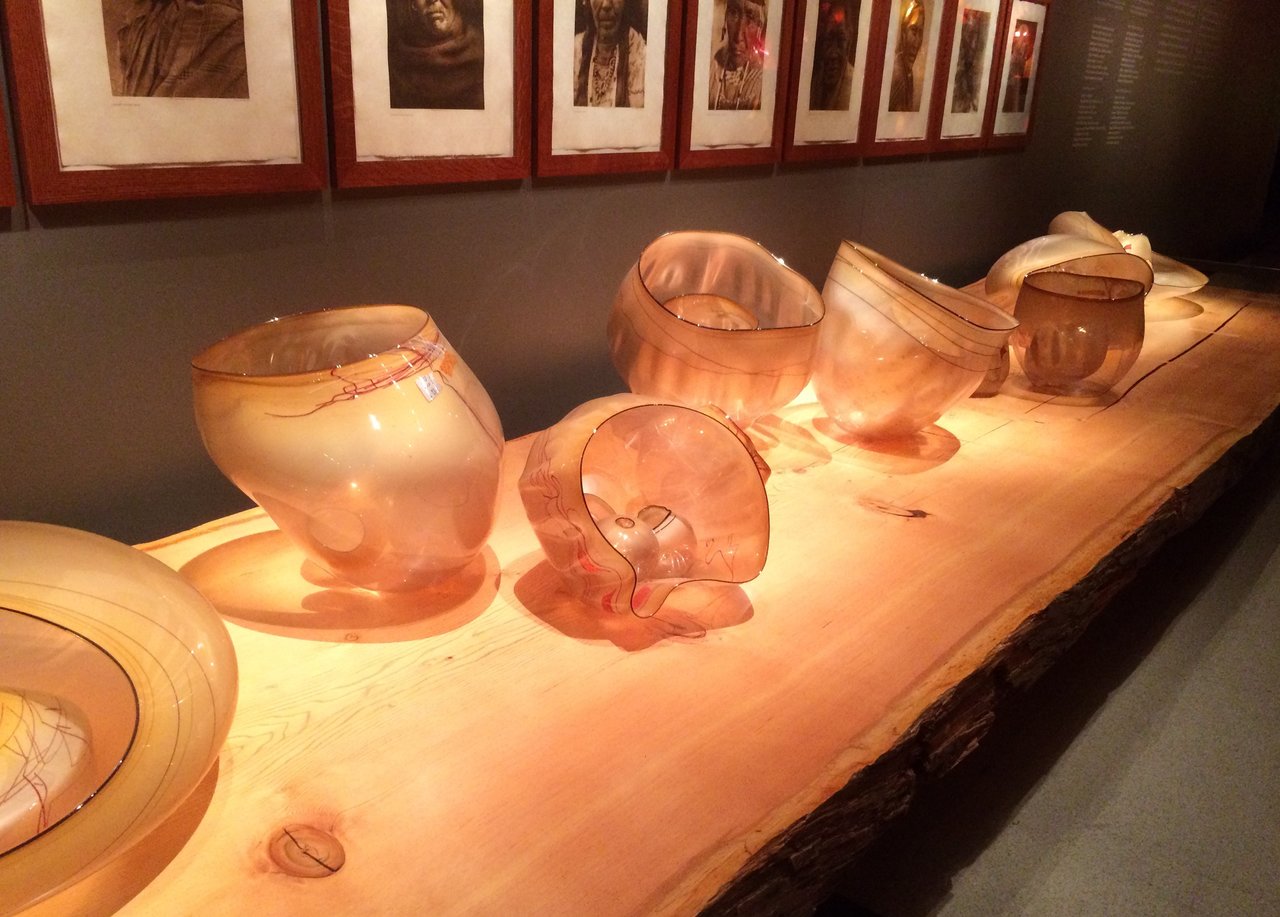 Dale Chihuly, Northwest Room (detail), 2012, blown glass
Dale Chihuly, Northwest Room (detail), 2012, blown glass
But is prioritizing aesthetics over concept a bad thing? As I walked by “Persian Trellis” and the numerous visitors staging mini-Instagram photoshoots with the whimsical floral structure, I realized that maybe Chihuly’s works were adored because they were beautiful, and maybe that was okay. If the artist’s primary concern is emulating their own conception of beauty through a body of work, then that is perhaps a concept in itself.
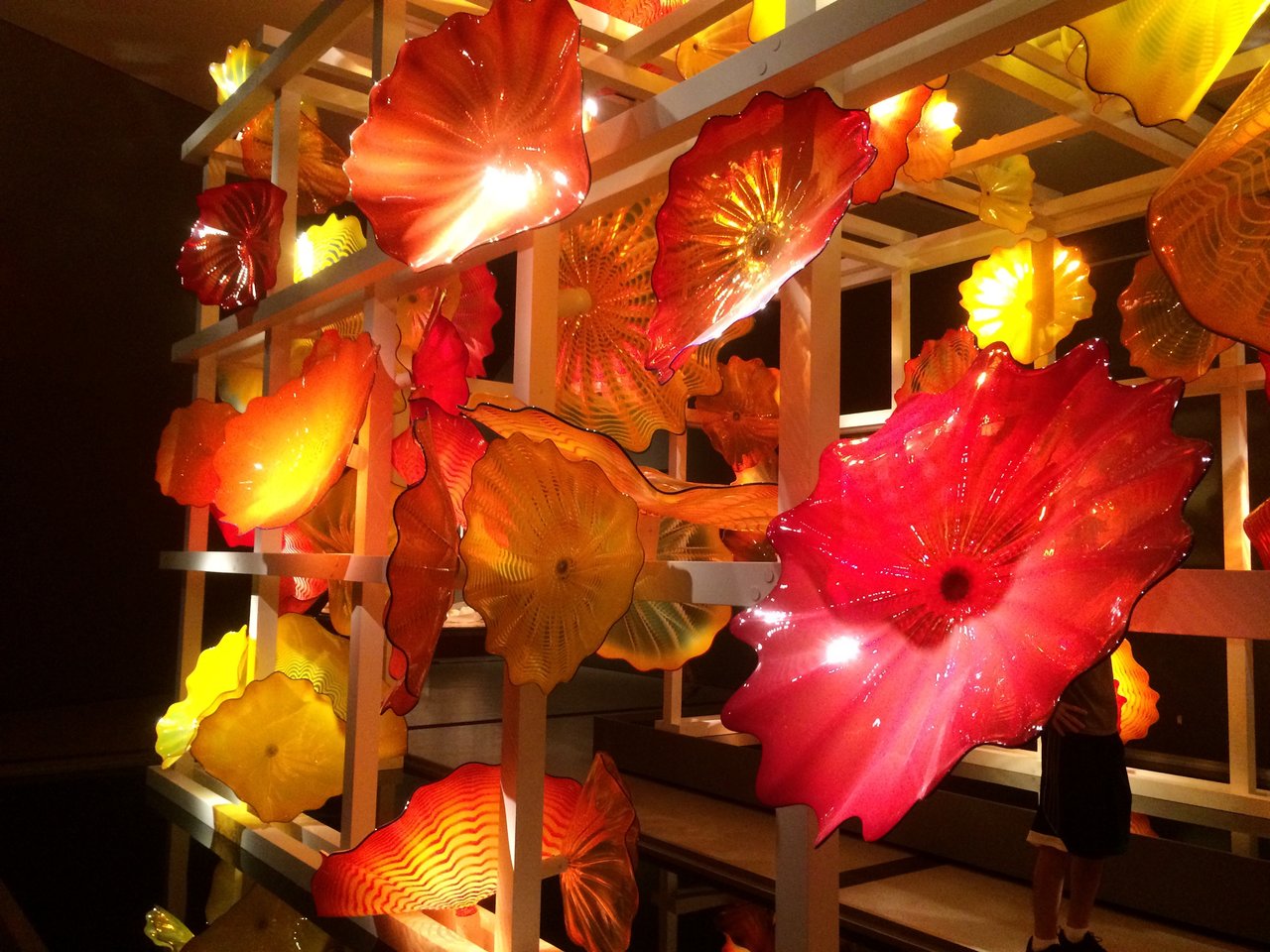 Dale Chihuly, Persian Trellis (detail), 2016, blown glass
Dale Chihuly, Persian Trellis (detail), 2016, blown glass
Beauty is in the eye of the beholder, and while I may find particular enjoyment in finding or learning the meaning or references behind an artwork, perhaps others enjoy art for the visuals—which is after all, the most traditional understanding of the discipline. Thus, CHIHULY is undeniably something in and of itself—Chihuly’s aesthetic world, through and through.
Text and photo: Emily Lawrence
*Exhibition information: June 25, 2016 – January 8, 2017, Royal Ontario Museum, 100 Queen’s Park, Toronto. Museum hours: Mon – Sun 10 am – 5:30 pm.
